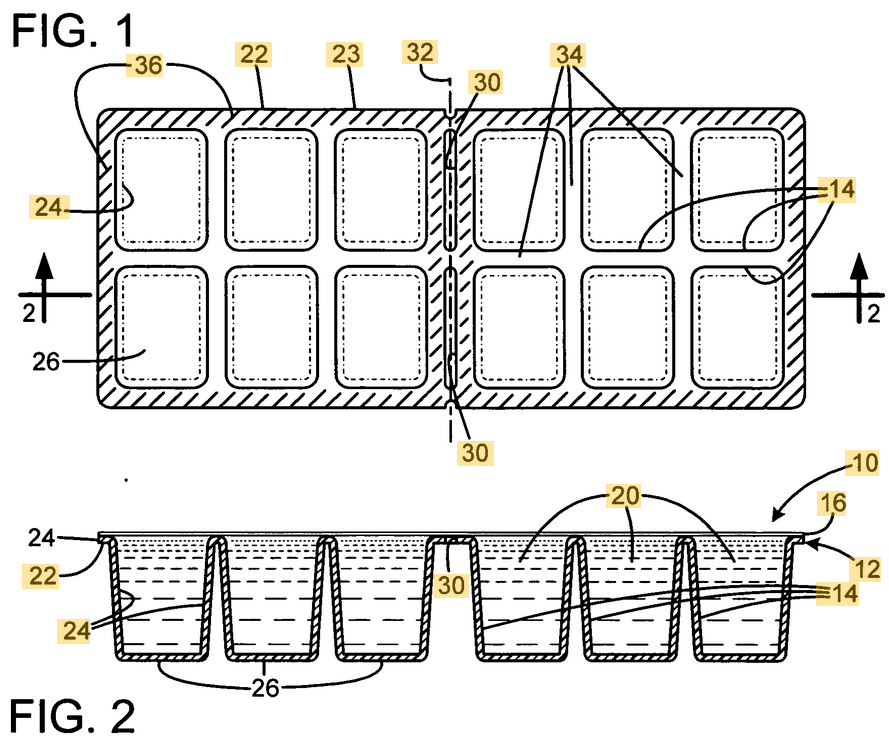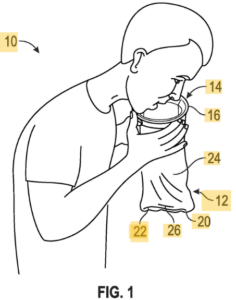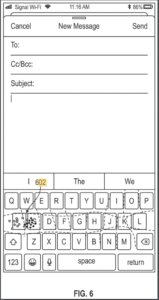By Ben Langlotz
|
July 8, 2020
|
Firearms, Intellectual Property Advice, Patent
|
0 Comments
WHAT I LEARNED FROM PATENTING MY OWN INVENTIONS
After 30 years as a patent attorney, I find that inventing and pursing my own patents keeps me sharp and stimulated. I’ve written about how hobbies that train me in technology (like camera lens repair) make me a smarter patent attorney. Years ago, I got a patent on a drop in part for a Steyr AUG trigger that reduces the heavy pull weight, and it’s been featured in a chapter in my book and a past newsletter. The patent expires in 5 years and has earned me tens of thousands of dollars in profits on the sales of the little plastic devices.
What I’ve Learned from My Own Invention Failures
In the past few years, I’ve had several notable failures in my own patent application. My batting average is MUCH better for my clients, and I suspect that because my inventions are outside of my own expertise, and yours are ones you’re darn sure of before making a big investment.

Patentable? Maybe when hell freezes over!
I tried patenting pre-filled ice cube trays. Imagine Fiji water in a sealed ice tray you pop in the freezer for “designer ice.” I knew it was a silly idea, had no plan to market it, but fifteen years ago I filed the patent application anyway. The failure mode was the prior art my hurried search failed to find.
When I saw the rejection, I simply dropped the effort. But as a flattering footnote, my published patent application has been cited 36 times as relevant to other later inventions.
I had one very near miss. Irritated with myself every time I sent an email but forgot to enclose the attachment, I invented the idea of having the email software look for key words like “attach” and “enclose” and if found to prompt the user “are you sure you want to send without an attachment?” before sending. Great idea, and it’s everywhere. Unfortunately, someone at Hewlett-Packard filed their patent application six months before mine.

“Would you like to image a document?”
About five years ago as we were using phones to take images of documents instead of using fax machines, I invented a camera system that used the orientation of the camera or phone to determine
whether document imaging was intended. If pointing straight down, it’s likely that a user was imaging a document and might prefer the flash and contrast modes, and pdf output for the image to be emailed.
Not a bad idea, but there was too much prior art to fight for it. Still, as a side note in the era of “you can’t patent software” I showed by lack of that kind of rejection that software-based inventions can be patented when framed as part of a system including physical elements like lenses and orientation detection transducers.

Ewww!
I’m still fighting over a barf bag. As an expectant first-time father four years ago, I learned that peppermint aroma could help ease nausea, and prevent vomiting in some cases. That inspired my invention of a barf bag with a scented insert packet that could be released to reduce the unpleasant incidence of vomiting. The point was that the insert packet is a therapeutic preventative treatment. I’m still fighting what I honestly think is a bad rejection. The examiner is citing a barf bag that comes in a packet with a moist towelette for cleanup after you barf. They note that the towelette might be scented, and it’s obvious to make this scent peppermint. Fine. But what’s not obvious is to put the cleanup towelette inside the barf bag, where it would be disgustingly unavailable when needed most. I’m fighting for at least the packet being attached inside and want to protect the aroma containment concept. Stay tuned.
Notably, the barf bag patent application contains the only known example of a haiku patent claim (from the Japanese poetry pattern of 5 syllables, 7 syllables, then 5 syllables):
a barf bag with an inside;
a nice scent inside.

The Freezer Breezer™
About five years ago we bought a house in the DFW area. And it had the Texas-sized Sub-Zero refrigeration setup: a three-foot-wide freezer next to a three-foot-wide fridge – the ultimate in chillage. But when the freezer door closed, the tight seal meant it developed enough suction to render it unopenable for time, like a bank vault: “Honey, don’t let it close…Nooooo!” So I created a gap in the gasket with some corrugated plastic and this let the suction equalize faster to make it more convenient. Success! I got the patent. It’s not super broad, but is for a planar body with a number of air passages and adhesive on one face.
The patent might never be exploited, and if I had time, I’d go to all the “Answers” websites where people ask about why their fridge door is hard to open, and direct them to my website. Also eBay and Amazon. Maybe $10 for a pack of three, including mailing. Ideally on a rack near the fridges at the big box stores, and an accessory provided by the manufacturer. But I suspect riches do not await on this one, so I’ll leave it for later.

All thumbs?
I’m fighting on a pending application for an invention that reduces touchscreen typing errors on your mobile device. The problem is that we tend to repeatedly make the same type of “aiming” errors with our thumbs, like hitting just wide of the intended key, and hitting the next key toward the edge. My solution is for the phone to learn when you are making errors, and what types you tend to make. Then to shift the touch sensor map to reflect where you’re actually hitting (without moving the image of the keyboard). If your “shotgun pattern” of hits for “D” are centered on the border with “S” then the system moves the zone for the D key to that area. The whole map shifts around based on your repeated aiming errors, just like zeroing the reticle on a riflescope (make it aim where the bullets will go).
At first, the examiner cited prior art (preexisting technology) that somehow moved the whole visual keyboard, but I argued – successfully – that this was like correcting the aim of a rifle by moving the target. Which doesn’t work because you end up shifting the point of aim and not correcting the error. That was good, then the examiner did a better search and came back with an Apple patent on something more pertinent. I recently had a good phone conference with the examiner. I’ve found that phone interviews are by far the most effective and efficient way to get results with patent examiners. It gets better results, faster, and more cost effectively by avoiding added rounds of rejections. I find instead of sending a long-winded argument that tells them why we think they are idiots and misunderstood everything, it’s better to have a friendly conversation about what we might agree is the appropriate scope of patent protection and the best terminology.
The jury (examiner) is out, and I usually advise clients that after a “favorable” conference where we seem to agree on things, there is an 80% chance that the good news comes true, and a 20% chance that added searching or a grumpy supervisor leads to more rejections. Cross your fingers – if this one is granted with a decent scope of protection, there’s a chance that this system might be attractive to Apple and or their competitors to license to help even a little bit on one of the most frustrating aspects of modern life.
I’ve also been dabbling in some camera lens inventions and while these are pending and filed, they’re not yet published. If I publish them here now, it closes off the opportunity for potential foreign patent rights, and that might be worth preserving for camera stuff with an international market. It’s a longshot, but why close a door sooner than needed? These flow from my hobby with new mirrorless (digital display) cameras and adapting old manual lenses. I find that performance is so good that there is a surplus of image quality that enabled cropping for the effect of “digital zoom” even in high performance cameras. There are problems my inventions have addressed in avoiding over zooming leading to disappointing quality, and how to control the zoom amount naturally without added buttons like on old pocket cameras. Note that I just revealed the problems, and not the solutions, so I didn’t commit the error of publishing the invention internationally.
Continued Next Month…
I saved my favorite invention for last but have run out of room. It’s patent pending, has a great chance of good protection, and the most common response I get is “Wow, I can’t believe no one has thought of that!” If (when) I get allowance of the claims, I’ll start working on the project and getting the product out there. I have had some good friends among my clients help with prototyping and marketing advice.
It solves the problem of finding the right size Allen wrench for that unknown socket head fastener you need to turn. Is it metric? Fractional inch? You know the drill – find the biggest one that fits, then fetch the other set to see if it has a better fit. My invention solves this simply by intermingling the sets, and arranging them by size, regardless of format. You don’t care if it’s inch or metric. You just want the right size, and the biggest one that fits. The patent covers socket sets and other sized tool sets that come in two different formats.
It’s probably best because the examiner has been dragging out the process since last October, and I might have some news for next month. I look forward to revealing more, and to learning about your inventions in the meantime.